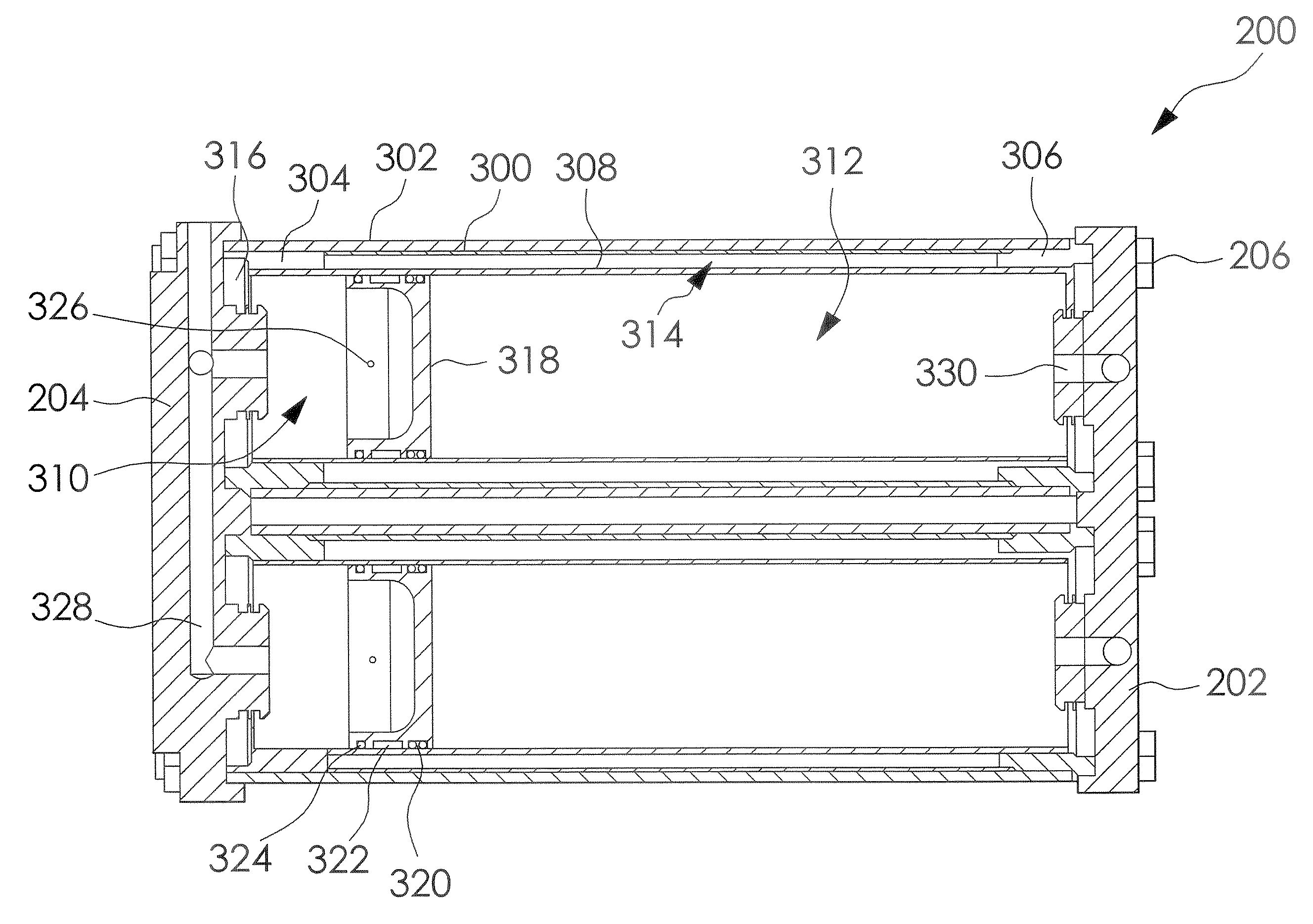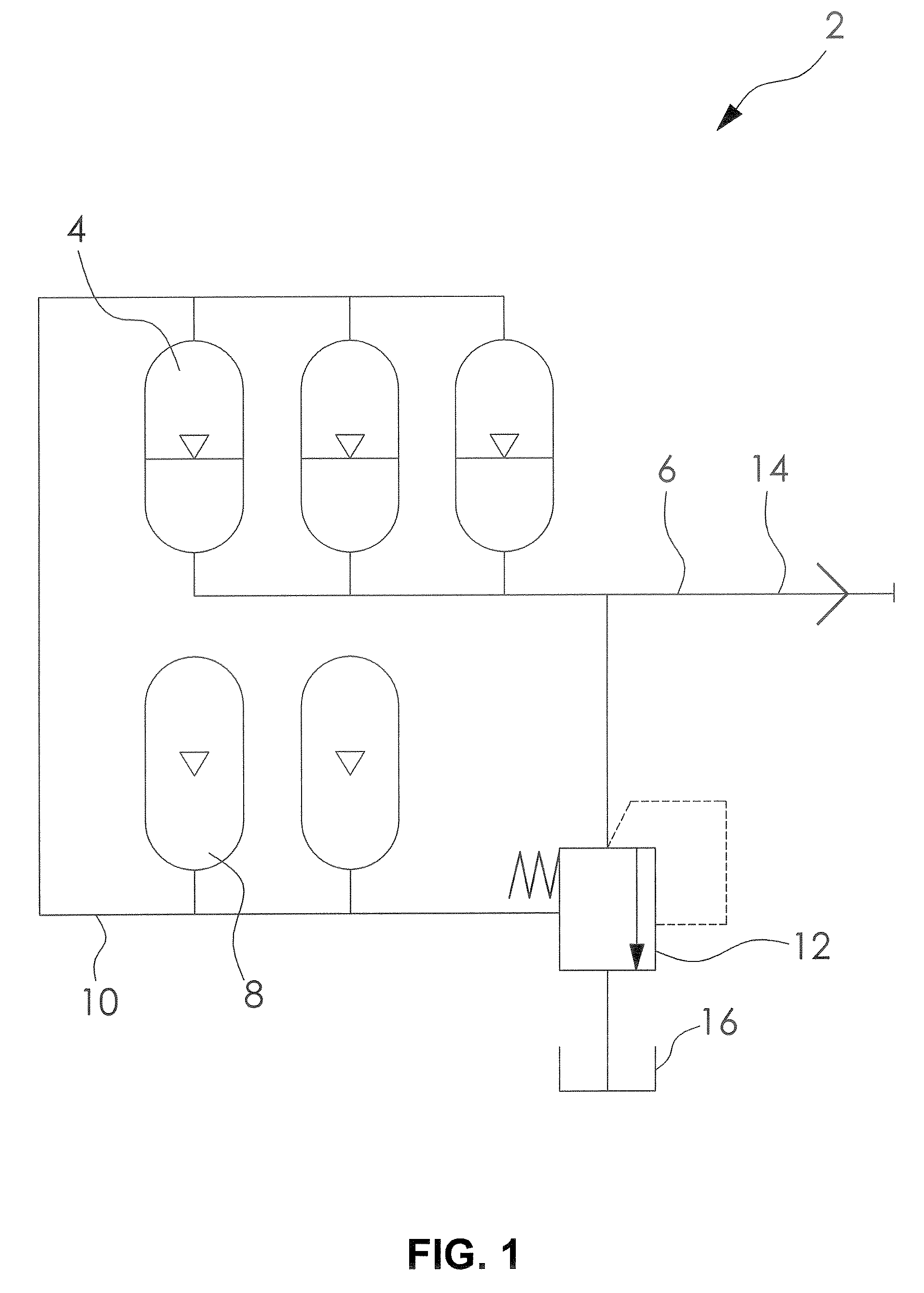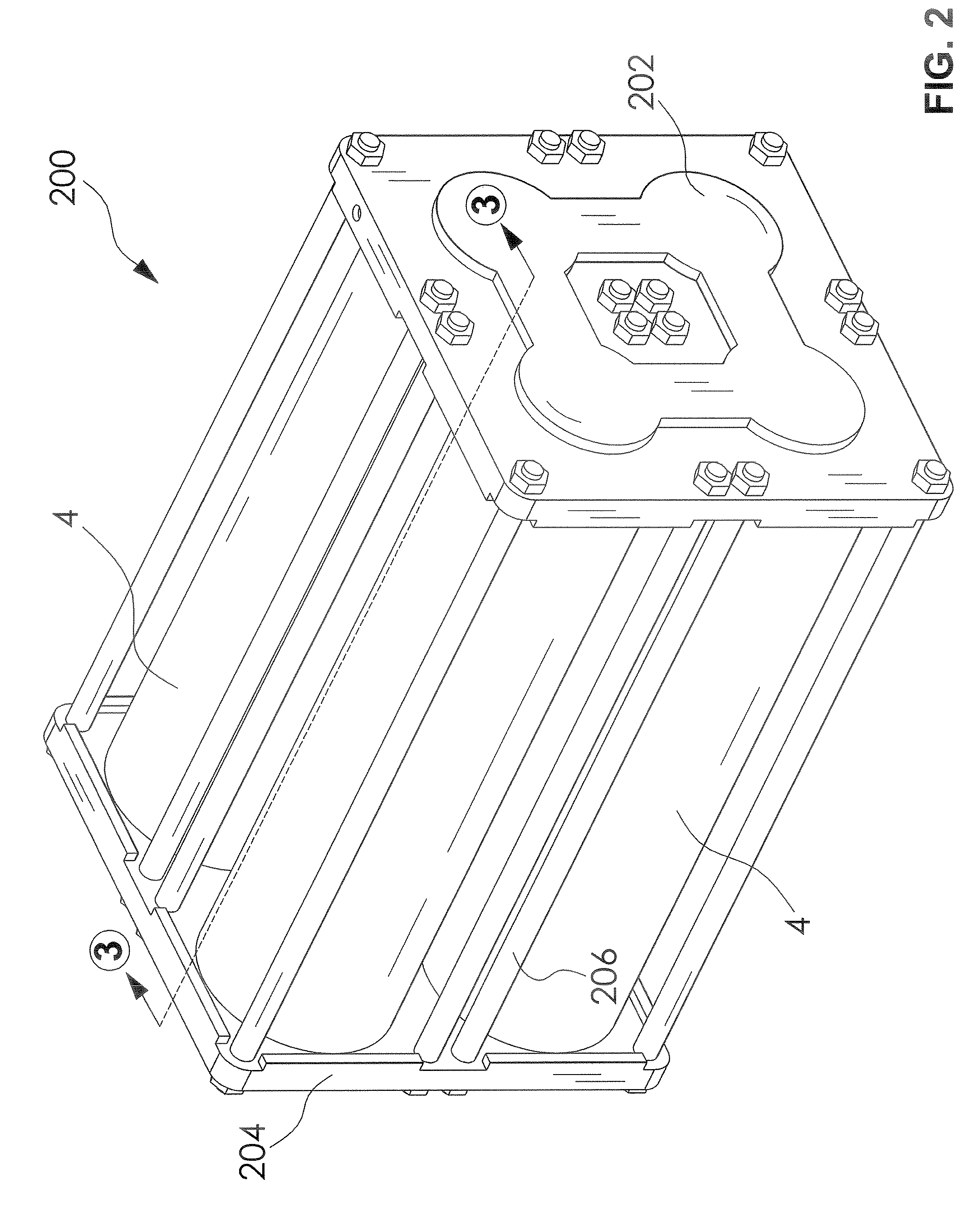Compact hydraulic accumulator
a compact, accumulator technology, applied in the direction of fluid couplings, couplings, functional valve types, etc., can solve the problems of poor reliability, high gas permeation rate of bladder accumulators, and limited spring types of accumulators with small fluid volumes, etc., to achieve mass production, easy serviceability, and light weight
- Summary
- Abstract
- Description
- Claims
- Application Information
AI Technical Summary
Benefits of technology
Problems solved by technology
Method used
Image
Examples
Embodiment Construction
[0034]The following description is merely exemplary in nature and is not intended to limit the present disclosure, application, or uses. It should also be understood that throughout the drawings, corresponding reference numerals indicate like or corresponding parts and features. In respect of the methods disclosed, the order of the steps presented is exemplary in nature, and thus, is not necessary or critical.
[0035]An overall schematic representation of an accumulator system 2 is shown in FIG. 1. The accumulator system 2 is comprised of at least one accumulator cylinder 4, whose fluid-side connections are joined to a common fluid network 6; zero or more auxiliary gas cylinders 8, whose gas-side connections share a common gas network 10 with the accumulator cylinders 4, and a gas-mediated, differential pressure relief valve 12. The accumulator system 2 is coupled to the primary hydraulic circuitry by connector 14, and the relief valve 12 has a connection to a reservoir tank 16.
[0036]...
PUM
 Login to View More
Login to View More Abstract
Description
Claims
Application Information
 Login to View More
Login to View More - R&D
- Intellectual Property
- Life Sciences
- Materials
- Tech Scout
- Unparalleled Data Quality
- Higher Quality Content
- 60% Fewer Hallucinations
Browse by: Latest US Patents, China's latest patents, Technical Efficacy Thesaurus, Application Domain, Technology Topic, Popular Technical Reports.
© 2025 PatSnap. All rights reserved.Legal|Privacy policy|Modern Slavery Act Transparency Statement|Sitemap|About US| Contact US: help@patsnap.com



